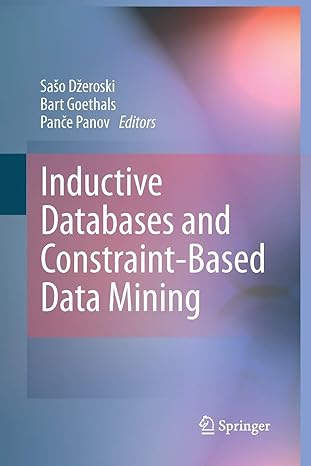Answered step by step
Verified Expert Solution
Question
1 Approved Answer
SYST 1 7 7 9 6 Deliverable 2 DESCRIPTION In Deliverable 1 you took the base code and came up with ideas for extending the
SYST
Deliverable
DESCRIPTION
In Deliverable you took the base code and came up with ideas for extending the code into a game of your choice. In Deliverable you will document your new design using fully developed use cases and class diagrams. You will also describe the OO Design principles that will be used in your final code. Please take care to review your feedback from Deliverable particularly the design document and incorporate any suggested improvements into your Deliverable The same standards for groupwork, professional writing style and citations apply to all deliverables. If you have questions, you can refer to the project description or ask your instructor. The project requirements are not to be reduced for groups smaller than students. Any groupwork conflicts will be dealt with using the contract from Deliverable
To begin, you will take the rules of your game that you provided in your Deliverable Design Document and turn them into a use case diagram and use cases narratives for your game. You should have received feedback on your project scope in Deliverable but to be clear, your fully developed use case narratives will depict the scope you will develop to in Deliverable when you complete the code and tests so please include only those requirementsuse cases that you plan to turn into code. Think like a tester and include alternate paths in your use case narratives.
Next, take the base code class diagrams you produced in Deliverable and extend them and change as necessary to include your new requirements. Use proper notation and include multiplicities and associations. You may optionally include methods and return types however this is not part of the rubric but will make your coding easier
Finally, complete the Deliverable Design Document Template to comment on how your new design addresses the flexibility of the system, and uses the OOD principles we have discussed in class to date.
SUBMISSION
Please submit one PDF document per group. This means that the document should be professionally organized and have a uniform style throughout. It should look as though it came from one team, not separate students. Please note that instructors may choose to run your submission through TurnItIn or compare the submission with other students from other sections for academic integrity purposes. Please take the time to properly cite your sources.
RUBRIC
Item Criteria Weight
Use Case Diagrams and Narratives Fully developed use case diagrams and narratives produced, including alternate paths. The scope of the code is well defined given the use cases. The use cases are functionally correct based upon the rules of the game cited in Deliverable
Class Diagram Diagram is notationally correct and complete, showing all necessary classes, associations and multiplicities. Also shows an understanding of aggregation, inheritance, and composition where appropriate. The diagram also depicts an architecture that follows the principles of OOD such as cohesion, coupling, delegation, and encapsulation.
Design Document Template All sections of the template are complete. The design choices described represent the principles of OO Design studied in class and are well articulated and presented.
FINAL DOCUMENT LAYOUT
One PDF with the following sections denoted using page numbers, headers and a table of contents:
Use Case Diagram
Use Case Narratives
Class Diagram
Design Document Template
Step by Step Solution
There are 3 Steps involved in it
Step: 1

Get Instant Access to Expert-Tailored Solutions
See step-by-step solutions with expert insights and AI powered tools for academic success
Step: 2

Step: 3

Ace Your Homework with AI
Get the answers you need in no time with our AI-driven, step-by-step assistance
Get Started


